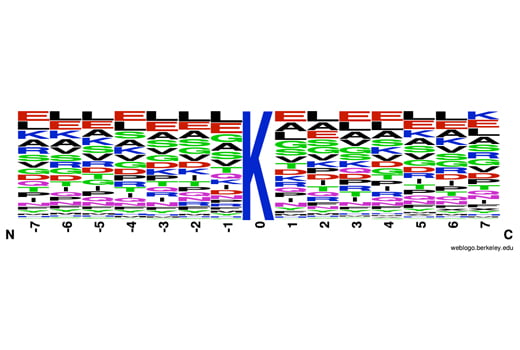 全部商品分类
全部商品分类

 下载产品说明书
下载产品说明书 下载SDS
下载SDS 用小程序,查商品更便捷
用小程序,查商品更便捷


 收藏
收藏
 对比
对比 咨询
咨询PTMScan® HS is an enhanced PTMScan® methodology with improved identification of post-translationally modified peptides. PTMScan® technology employs a proprietary methodology from Cell Signaling Technology (CST) for peptide enrichment by immunoprecipitation using a specific bead-conjugated antibody in conjunction with liquid chromatography tandem mass spectrometry (LC-MS/MS) for quantitative profiling of post-translational modification (PTM) sites in cellular proteins. PTMs that can be analyzed by PTMScan® technology include phosphorylation, ubiquitination, acetylation, and methylation, among others. The technology enables researchers to isolate, identify, and quantitate large numbers of post-translationally modified cellular peptides with a high degree of specificity and sensitivity (HS), providing a global overview of PTMs in cell and tissue samples without bias about where the modified sites occur. For more information on PTMScan® products and services, please visit Proteomics Resource Center.

Product Usage Information
Important for SUMO Remnant: Wild type alpha-lytic protease (WaLP) is a serine endopeptidase that cleaves at the carboxyl terminal side of amino acids alanine, serine, threonine, and valine. Please check that the predicted SUMO sequence of your model organism contains AGG, SGG, TGG or VGG at the c-terminus to ensure reactivity.




All components in this kit are stable for at least 12 months when stored at the recommended temperature. Do not aliquot the antibody.
参考图片
Motif analysis using all ubiquitin remnant peptides enriched and identified by PTMScan® HS Ubiquitin/SUMO Remnant Motif (K-ε-GG) Kit from three different samples. One milligram each of mouse brain, mouse liver, and MKN-45 human gastric cancer cells were independently digested with trypsin and immunoprecipitated with PTMScan® HS K-ε-GG Remnant Magnetic Immunoaffinity Beads. Orbitrap Fusion™ Lumos™ mass spectrometer analysis identified a total of 8,928 non-redundant sites. The motif logo shows that the K-ε-GG antibody is a general motif antibody that recognizes the K-ε-GG motif independent of protein context, without other amino acid preferences.





